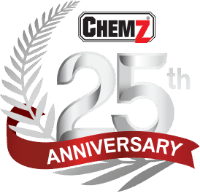British contractor Balfour Bealty took a different approach to completing the Penrose to Pakuranga section of the North Auckland Northlands (NAaN) Project involving design, manufacture and installation of 220 kV cables.
 The objective of the project was to provide security of electricity supply and to reinforce the electricity transmission network through Auckland and to the Northland region by providing an efficient and secure 220 kV underground electricity supply between the Pakuranga and Penrose substation facilities.
The objective of the project was to provide security of electricity supply and to reinforce the electricity transmission network through Auckland and to the Northland region by providing an efficient and secure 220 kV underground electricity supply between the Pakuranga and Penrose substation facilities.
The route between Pakuranga and Penrose is approximately 9,150m long and required open cut trenching throughout the length of the route (excluding Waipuna and Ti Rakau Bridges) and impacted on public highways, rail tracks and water course way. The project also involved the decommission of the existing 110kV overhead transmission line between the Pakuranga and Penrose substations.
The underground transmission circuit route was buried in a trench within the road, approximately 2m wide by 1.9m deep. Normally there would have been access pits every 200m along the 9,150m route to facilitate the pulling of the 146mm diameter cable through the 250mm diameter ducts laid in the trench. This would have resulted in over 40 access pits along the route.
The different approach taken by Balfour Bealty was to work with NKT cables, the only company in the world capable of producing 220 kV cable in lengths of excess of 1000m. By using these extreme cable lengths the number of access pits was reduced to nine, with resulting benefits in reducing cable joints and the disruption to traffic flows during the cable installation phase of the project.
 Pulling 1000m lengths of cable, weighing around 40 tons through undulating underground ducts presented unique problems, with the allowable pulling force limited to prevent damage to the cable. The solution was provided by New Zealand owned and operated specialty chemical manufacturer CHEMZ, with their cable pulling lubricant. Blue Lube. The contractors used 1000 litres of Chemz Blue Lube for every 1000m of cable.
Pulling 1000m lengths of cable, weighing around 40 tons through undulating underground ducts presented unique problems, with the allowable pulling force limited to prevent damage to the cable. The solution was provided by New Zealand owned and operated specialty chemical manufacturer CHEMZ, with their cable pulling lubricant. Blue Lube. The contractors used 1000 litres of Chemz Blue Lube for every 1000m of cable.
A rubber slug, attached to a 3 ton capstan winch was used to spread the Chemz Blue Lube through the conduit, lubricating the duct as it was pulled through. The procedure ensured that enough Blue Lube Lubricant was discharged at locations where extra lubrication was needed at major bends, angle changes or depth changes in the duct route, ensuring that there was as little friction as possible between the cable and the duct. Another innovation created by the Balfour Bealty team was to adapt an agriculture spray unit to apply additional Chemz Blue Lube to the cable as it left the drum and was pulled into the ducts. This additional lubricant assisted in keeping the pull force required within the allowable parameters. The lubrication spray unit was a unique innovation and will be sold at the completion of the project, giving a competitive advantage to another contractor in future cable pulling projects in this country.
Gordon Hockaday (Project Engineering Manager) says "Chemz Blue Lube was a critical component in the successful outcome of this ground breaking 1000m plus cable pulling concept. Chemz worked with us to adjust the viscosity of their Blue Lube to suit the new spraying technology we developed for this project. We estimate that by being able to pull these 1000m plus lengths of 220 kV cable using Chemz Blue Lube, a saving of over $700,000 was achieved on this project".


